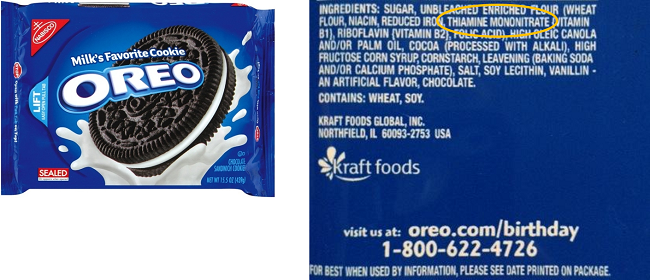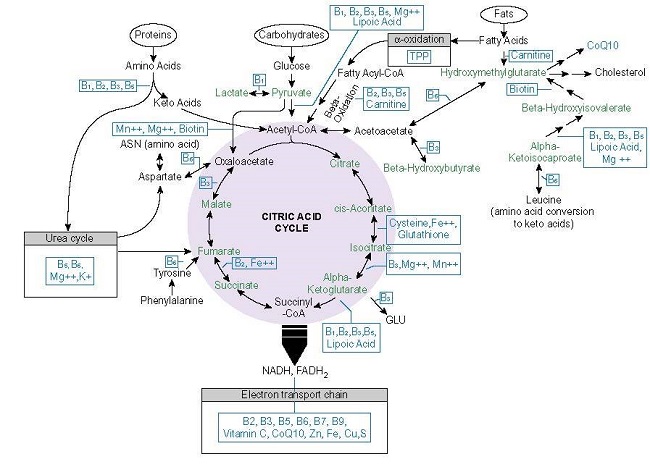Over the last several months, I have been fascinated by the fuel preferences of the mitochondria in the different organs of the body. It seems that the mitochondria in each organ system have specific fuel preferences. The muscles like protein and carbs, the heart likes fatty acids, and the brain has all sorts of fuel preferences depending upon region and state of health. This is mind-blowing and contrary to medical textbooks on the subject. For as long as anyone has cared to address the fuel preferences of the mitochondria, an overly simplistic, black-box model has prevailed. The gist of which is the errant presumption that so long as there are sufficient calories ingested, no matter from where those calories originate, carbohydrate, protein, or fats, real food or processed garbage food-like products, the mitochondria will magically convert those foods into ATP, the energy used by our cells to perform the myriad functions of living. To some extent that is true, but woefully short of the real picture. Nevertheless, we have built an entire economy of medical thought supporting the ‘it just doesn’t matter’ model of feeding.
Based upon this equality of calories presumption, I have seen doctors ‘prescribe’ ice cream and other processed foods devoid of nutrients to children with growth deficiencies. Just as egregious, are the sugary chemical concoctions (Ensure, Boost, and the like) served to severely ill patients in any American hospital under the banner of ‘medical nutrition’. Admittedly, financial interests play a role, but undergirding those interests is the long held belief that calories are all that matter; a belief, that I would argue, we as a society, are all too happy to accept. It is a simple idea, one that doesn’t require much thinking, and best of all, lets us eat anything we want as long as the calories are balanced in our favor. Who among us has not convinced ourselves of the ‘healthiness’ of some low-calorie treat?
The Wonder of Fortified Foods
A similarly troubling assumption about food equivalency and one I see all too often is that enriched and fortified foods are nutritionally equivalent to native foods. This is certainly the reasoning behind the hospital protein drinks where calorie density plus fortification equals nutrition. But does it really? Do we really believe so strongly in the powers of modern industrial food chemistry that the foodstuffs we produce with seemingly infinite shelf lives, all manner of chemically derived flavor enhancers and colors, loaded with corn syrup, trans fats, and other delectable substrates are somehow converted into ‘healthy’ foods by the magic of fortification? Moreover, do we really believe that those processed substrates appropriately fuel the mitochondria?
Apparently so.
Just last week, some internet troll tried to argue that there was no such thing as vitamin or mineral deficiencies in modern America, citing food fortification programs as his example. Similarly, a few months ago I spoke at a conference on this topic and the physicians in the audience were incredulous about the idea of nutrient deficiencies for the same reasons. Even prominent researchers bang the food fortification drum. Consider this study.
“Only a small percentage of the population had total usual intakes (from dietary intakes and supplements) below the estimated average requirement (EAR) for the following: vitamin B-6 (8%), folate (8%), zinc (8%), thiamin, riboflavin, niacin, vitamin B-12, phosphorus, iron, copper, and selenium (<6% for all).”
It seems that we have solved malnutrition once and for all. Foodstuff fortification equals nutrition. You can have your Oreos and meet minimal nutrient requirements. End of story.

Or is it?
Dig a little deeper and we see that we have done nothing of the sort. About the same study cited above, a secondary study said this:
“Without added nutrients, a high percentage of all children/adolescents had inadequate intakes of numerous micronutrients…”
“Among all age/sex subgroups, when considering only intrinsic nutrient intake from foods, approximately 25% to 100% had inadequate intakes of numerous nutrients, including vitamins A, D, E, folate, and calcium. Among females aged 14 to 18 years, approximately 23% to 92% also had inadequate intakes of thiamin, riboflavin, niacin, vitamin B-6, vitamin C, phosphorus, magnesium, iron, and zinc…”
“When nutrient intakes contributed from fortification were added, the %<EAR for vitamins A, D, B-6, C, the five enrichment nutrients, and zinc shifted sharply lower.”
Translation: most of the nutrients contributing to the presumption of nutrient sufficiency come from fortified food products and not actual food. So while fortification provides a bare minimum of nutrients and staves off outright malnutrition, can it be considered healthy? I don’t think so, but when we buy into the nutritional equivalence, calories in, calories out model of health, what we are saying is this:

Is nutritionally equivalent to this:

We are saying that it does not matter what types of foods we consume so long as they are fortified and so long as the calories balance. We are back to the notion that prescribing ice cream to spur growth in kids, fake ‘nutrition’ drinks for the ill and elderly, and all manner of other convoluted dietary machinations are okay, somehow healthy, and even, logical.
Of Fructose, ATP, and the Magical Mitochondria
If we take this logic one step further, we arrive at the door of that magical mitochondrial black box that will take any fuel we give it and turn it into ATP. Admittedly, to some degree that is true. No matter the origins of that fuel, mitochondria will break it down into its carbon skeleton and through a series of reactions produce ATP. That’s their job. The question, however, is at what cost. That is, are these food products the most efficient and desirable fuel substrates? More specifically, what is the energy cost to convert garbage food into ATP? Consider something as simple as fructose and how it moves through the glycolytic machinery:
“The flow of fructose into the glycolytic pathway gives the appearance that fructose is a benign fuel suitable for human (over)consumption; in reality, fructose’s conversion to fructose-1-phosphate drains ATP from the cell, promotes a dramatic inflammatory response, and leads to clinical features of insulin resistance, hypertension, and metabolic syndrome via several mechanisms, one of which is increased production of uric acid.” Alex Vasquez
Although the mitochondria will convert these fructose-dense foodstuffs into ATP, there are costs; costs that can only be accounted for if one moves beyond the black-box model of mitochondrial metabolism. And yes, I know, fructose comes in fruit and vegetables too, but where most folks get their fructose is not from fruit or vegetables but in the form of high fructose corn syrup, the staple sweetener in all processed foods.
Fortified Versus Real Food
The way I see it, there are at least two issues to consider when assessing the healthiness of food. Firstly, and as I mentioned previously, the mitochondria in the different organ systems require different macronutrients, one a well-balanced diet from real food would provide. In contrast, a diet derived from starchy, high fructose corn syrup sweetened and chemically processed carbs no matter how strongly fortified will never be able to match a well-balanced diet of whole foods.
Second, to get from macronutrient to ATP takes a whole host of nutrient co-factors, vitamins, and minerals, to power the enzymes responsible for this process. Take a look at the figure below from our book. There are 24 vitamins and minerals needed to convert what we eat into ATP. More, if you consider all of the ancillary processes not charted here.
Mitochondrial Nutrients

Even when the scales balance on our calories in, calories out model, they do not balance in the mitochondria and health depends entirely on the mitochondria. Diets heavy in processed foods not only lack the basic macronutrients, typically protein and good fats, but the minimal nutrients provided by these foods are neither sufficient to power the mitochondrial enzymes tasked with converting these products into ATP, nor are they sufficiently ‘nutritious’ to overcome the ATP costs of clearing all of the garbage that these products contain. This leaves us with decrements in ATP, and in a state of constant metabolic distress, which itself demands additional energy to resolve. It is a downward spiral to be sure; one where the use of ice cream or pseudo-nutritional drinks only hastens.
What do the Mitochondria Need?
A diet rich in real, organic foods is a good start. Look what happens when someone who is disabled by a chronic, neurodegenerative illness changes her diet. Health becomes possible.
Dr. Terry Wahls: Minding your mitochondria
Although a change in diet may not be all that is required, it is the foundation upon which health can be built; a foundation that is just not possible when ice cream is prescribed as nutrition.
We Need Your Help
More people than ever are reading Hormones Matter, a testament to the need for independent voices in health and medicine. We are not funded and accept limited advertising. Unlike many health sites, we don’t force you to purchase a subscription. We believe health information should be open to all. If you read Hormones Matter, and like it, please help support it. Contribute now.
Yes, I would like to support Hormones Matter.
Image by Fathromi Ramdlon from Pixabay.
This article was first published on August 13, 2018.














Here another interesting study regarding uric acid : https://pubmed.ncbi.nlm.nih.gov/26703429/
A summary of Dr. Richard Johnson, author of: Nature wants us to be fat (regarding fructose and polyol pathway/fructose neogenesis) can be found in 3 videos on YouTube, here no.1: https://youtu.be/gAjC_BWMElk
Please consider non-amazon pdf distribution of your book that could be little cheaper for me but still profitable for you (cutting out distribution costs)
The book’s publisher is Elsevier, they set the price and take much of the profit. Unfortunately, it is just as expensive on their site as well. It is not a profitable endeavor no matter who distributes
At age 72, I take no meds except for Levothyroxin (thyroidectomy due to goiter). I weigh less than I did in HS or college. I started at 400 pounds in 2008, Atkins then low carb, now keto. The thing is, I live in a senior world where illness is rampant, but nobody reacts at all when I say I eat keto. There is a totally ingrained compulsion to eat processed foods. I am at my wits end; people around me are sick or dying?.
Outstanding article! These are my sentiments exactly. This world needs more providers who not only think along these lines but who also understand that setting a fair price for his or her service should not resemble the high amounts charged by the expensive, big-pharma-run, insurance-dictated, drugs-and-surgery loving, U.S. “healthcare” model. If payment was based on physician performance, most of them would be as poor as church mice. Any other business with as lousy a record would go under in their first year. Not to mention that they conveniently forget that the patient is also the customer, belittling our questions or becoming offended if we choose to not follow their recommendations. My observations over the past two years of being subjected to “the system” have taught me that even with all their shiny, new digital instruments and diagnostic machines, they are no more wise than they were before acquiring their degree (with many being even more worse off for their medical school brainwashing considering their hard stance on prescription drugs), and do more harm than good. The love of money and power has made this big mess…but precious few see any problem. I’ll shut up now and start my unsubscription to Hormones Matter. Thank you for the difference you’re making!